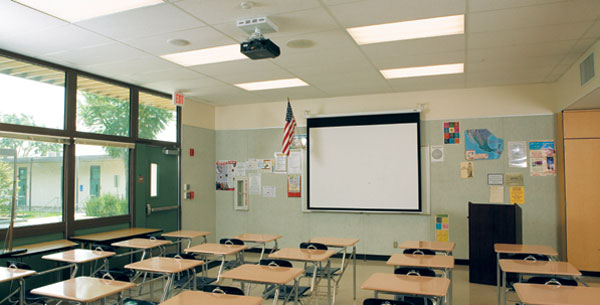In May, President Trump revealed his education budget proposal for the fiscal year.
The resulting rhetoric from public school proponents has been incendiary, with the response in Colorado being particularly negative. Claims of the proposal gutting whole programs for special education, afterschool and, according to local teacher’s union Colorado Education Association’s social media, of “harming” students with a “profits first agenda,” have also been commonplace.
But the reality of the budget is less sinister.
The proposed $9 billion in cuts are largely being taken from small portions of various education programs, not a large portion from any one program. In fact, a billion extra dollars are being put into public charter schools and school choice via Title I. Charter schools are worth investing in, particularly because they tend to outperform their traditional public counterparts.
The leaner proposed budget matches funding levels in 1997. That may not be a bad thing, as it is unclear whether public education has improved student outcomes as a result of the steady increase in federal funding over the past two decades. Nine billion dollars less sounds like a lot, but if the current system has not benefited from simply increasing the budget, then perhaps the amount of funds isn’t the problem, but rather the way the funds are utilized.
Fears extended-day and afterschool programs will go away also appear exaggerated, considering these programs would only take a $1 million loss. That’s barely a drop in the overall $9 billion bucket and only a tiny portion of these programs’ billion-plus in annual funding, which is largely raised through nonfederal means.
Nationally, the only full-blown elimination of any program even related to extended learning is of the 21st Century Community Learning Centers Program, which even the Afterschool Alliance admits presently funds only a small fraction of the aforementioned total costs. Defunding it will therefore not by any stretch bring an end to after school programs.
Hardly any of the other individual departments in the budget proposal are “gutted,” either. The $9 billion total would accumulate mini-cuts made to all the various wings of the U.S. Department of Education, including the department’s Office for Civil Rights, which would only lose $1.7 million. While this office was responsible for the inclusion of students under the Americans with Disabilities Act, the act itself is still law, and applying a small cut to the managing office itself will not magically undo these protections.
Critics have also conflated Trump’s education budget with House Resolution 610, which does call for even more cuts, but also has nothing to do with the education budget proposal. HR 610 was introduced in the House by Rep. Steve King (R-MD) in January, and there it has remained with only one co-sponsor and no further action or support. It has almost no chance of passing.
Even the proposed $112 million cut to special education makes very clear that $13 billion will still stay in place for Individuals with Disabilities Education Act programs, which means special education isn’t going anywhere. Even so, a call to cut less from IDEA garnered bipartisan support as recently as June 15th this year, and Republicans such as Senator Roy Blunt have argued that cuts of this scale will likely “not occur.”
Either way, the fears surrounding special education seem based not in fact but in rhetoric.
The more uncontroversial elements of the proposal, such as the setting aside of protected funds specifically for the purposes of empowering historically black colleges and communities, or the fact that voucher programs like those accounted for in the budget actually do empower poorer and marginalized families to fund their own children’s educations at better quality private schools, aren’t making headlines, but are just as indicative of the proposal’s character.
But there is some valid criticism to be made regarding Trump’s overall proposed budget—mainly that it is unclear whether or not the total numbers actually add up to a fiscally feasible product. There are a variety of questions about the math and underlying assumptions at the core of the budget that have left a number of political and economic observers scratching their heads. Even so, proposed budgets are rarely adopted wholesale. Refinements and adjustments will undoubtedly be made if Congress decides to move forward with specific aspects of the proposal.
Nevertheless, the budget is a flawed but sincere attempt at revitalizing an education system that few have the courage to really put under the microscope. Patches of inefficiency aside, the budget does not threaten to completely dismantle any aspect of the daily needs and mechanisms of public schools. It merely challenges and reassesses the ways in which the funding occurs, and how much is truly necessary.
— Micah J. Fleck holds a BA in Anthropology from Columbia University. He is an education policy intern at the Independence Institute, a free market think tank in Denver.
This article originally appeared in the Greeley Tribune on June 28, 2017.









